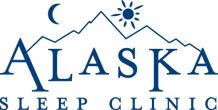Alaska has the highest rate of suicide per capita in the country. Let’s join together throughout the month of September to bring change to our beautiful state and in the hearts of our fellow Alaskans.
Alaska Suicide Facts and Statistics:
- The rate of suicide in the United States was 11.5 suicides per 100,000 people in 2007. In 2007, Alaska’s rate was 21.8 suicides per 100,000 people. The rate of suicide among Alaska Native peoples was 35.1 per 100,000 people in 2007.
- Alaska had 1,369 suicides between 2000 and 2009, an average of 136 deaths by suicide per year. The highest number of suicides, 167, occurred in 2008. The lowest number, 123, occurred in 2003. That is an average of about 2.6 suicides in Alaska every week, or more than 10 a month.
- At least one suicide occurred in 176 Alaskan communities between 2000 and 2009.
- About 78% of suicides in Alaska are committed by men and 22% are committed by women, according to the Suicide Prevention Resource Center.
- Alaska Native men between the ages of 15-24 have the highest rate of suicideamong any demographic in the country, with an average of 141.6 suicides per 100,000 each year between 2000 and 2009
- Youth who are exposed to suicide or suicidal behaviors are more at-risk for attempting suicide, according to the American Association of Suicidology.
- Suicide deaths consistently outnumber homicide deaths by a margin of three to two, according to the American Association of Suicidology. a More than 90% of people who die by suicide have depression or another diagnosable, treatable mental or substance abuse disorder, according to American Association of Suicidology.
**Information is from the Alaska Bureau of Vital Statistics unless otherwise specified.**
Alaska Mental Health Trust Authority 25th anniversary celebration
Friday, Sept. 6 – 4-7 p.m.
Anchorage Museum, 625 C Street, Anchorage
Join the Alaska Mental Health Trust Authority’s 25th anniversary celebration on the front lawn of the Anchorage Museum for food, entertainment, partner booths and activities. The event is free and open to the public!
Out of Darkness Walk
Saturday, Sept. 14 – 9 a.m.-12:30 p.m.
Chuck Albrecht Ball Fields, 4781 Elmore Road, Anchorage
The Out of the Darkness Walks raises awareness and funds that allow the American Foundation for Suicide Prevention to invest in new research, create educational programs, advocate for public policy, and support survivors of suicide loss. Go here to join the team or donate.
Warning signs of suicide:
- Talking about wanting to die
- Looking for a way to kill oneself
- Talking about feeling hopeless or having no purpose
- Talking about feeling trapped or in unbearable pain
- Talking about being a burden to others
- Increasing the use of alcohol or drugs
- Acting anxious, agitated or recklessly
- Sleeping too little or too much
- Withdrawing or feeling isolated
- Showing rage or talking about seeking revenge
- Displaying extreme mood swings
- The more signs a person shows, the greater the risk. Warning signs are associated with suicide but may not be what causes suicide.
What to do if someone you know exhibits warning signs:
- Stay with them, do not leave the person alone
- Remove any firearms, alcohol, drugs or sharp objects that could be used in a suicide attempt.
- Call the U.S. National Suicide Prevention Lifeline at 800-273-TALK (8255)
- Take the person to an emergency room or seek help from a medical or mental health professional.
- If you need immediate intervention or someone you know is in crisis or having thoughts of suicide, please talk to someone you trust, call 911 or call the Alaska Careline at 1-877-266-4357. The Alaska Careline Crisis line is here for you 24 hours a day, 365 days a year, and your calls are free and completely confidential. You can also visit carelinealaska.com.
View and share the Tell Your Heart Story public service announcement on YouTube at https://youtu.be/a9f-lzzI0D4. Use the hashtag #CultureHeals to help share the reasons you enjoy life!
If you or someone you know is having thoughts of suicide, the Alaska Careline offers free, immediate and confidential help at 1-877-266-4357. Text 4help to 839863 from 3-11 p.m. Tuesday through Saturday.**
Obstructive sleep apnea may be one reason depression treatment doesn’t work. When someone is depressed and having suicidal thoughts or their depression treatment just isn’t working, their caregivers might want to check to see if they have obstructive sleep apnea, investigators say.
That’s true even when these individuals don’t seem to fit the usual profile of obstructive sleep apnea, which includes males who are overweight, snore and complain of daytime sleepiness, says Dr. W. Vaughn McCall, chair of the Department of Psychiatry and Health Behavior at the Medical College of Georgia at Augusta University.
While more work remains, the new evidence already suggests that testing for obstructive sleep apnea should be part of the guidelines for managing treatment resistant depression.
“We were completely caught by surprise that people did not fit the picture of what obstructive sleep apnea is supposed to look like,” says McCall.
While it’s known that people with obstructive sleep apnea have higher rates of depression than other populations, little is known about rates of obstructive sleep apnea in patients with major depressive disorder, so investigators decided to look in a population of patients they already were studying.
Treatment of obstructive sleep apnea may improve symptoms of depression, and comprehensive screening for the sleep problem should be included for treatment resistant depression.
It’s acknowledged that undetected medical or psychiatric conditions can be a cause of treatment-resistant depression, but obstructive sleep apnea is not on the relatively long list that includes endocrine disorders, like hypothyroidism, as well as problems like coronary artery disease and cancer.
What these and other studies have shown that if you don’t sleep you get depressed and depression is a major risk for suicide. In fact, reports from several years back show that when people lose hope of ever getting another good night’s sleep, they are at high risk for suicide.
Sleep apnea tends to produce excessive daytime sleepiness but this study was recruiting for patients with insomnia, and most with insomnia don’t have sleep apnea, rather issues like anxiety, stress and depression and other emotional and psychological factors are more likely interfering with their sleep. Rather than complain of daytime sleepiness, females are more likely to say they are unable to fall asleep and stay asleep at night and are more likely to be depressed.
Still searching for the solution? There are professionals who can aid in your fight with insomnia and restless nights when the answer is not easy. Call the Alaska Sleep Clinic for a free 10 minute consultation.
The research was funded by the National Institute of Mental Health.

Story Source:
Materials provided by Medical College of Georgia at Augusta University. Note: Content may be edited for style and length.
Journal Reference:








